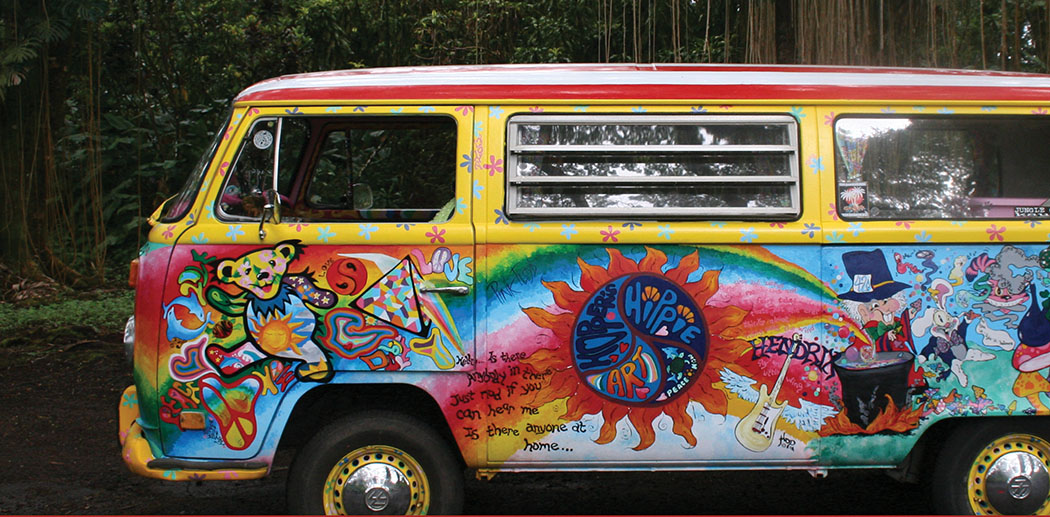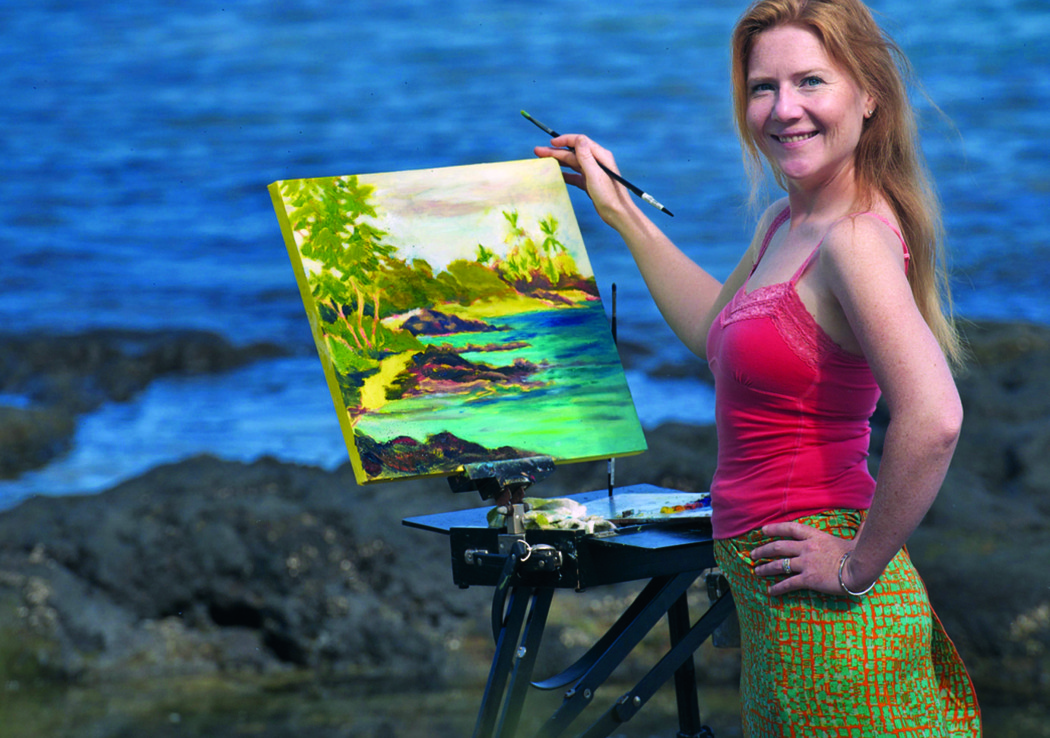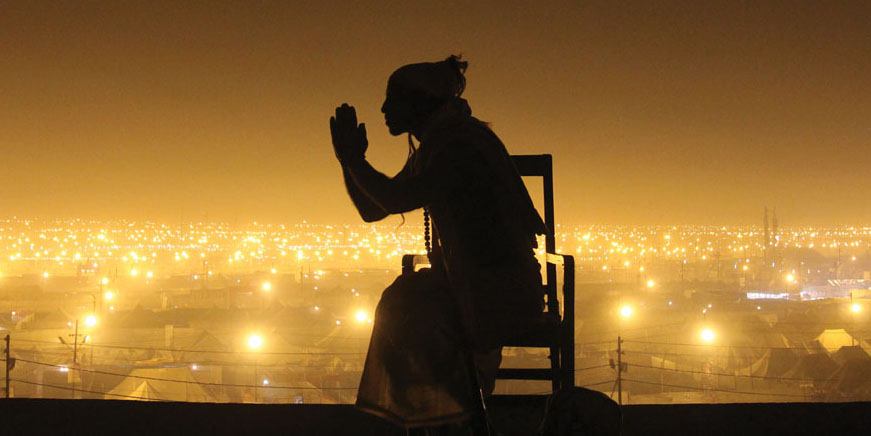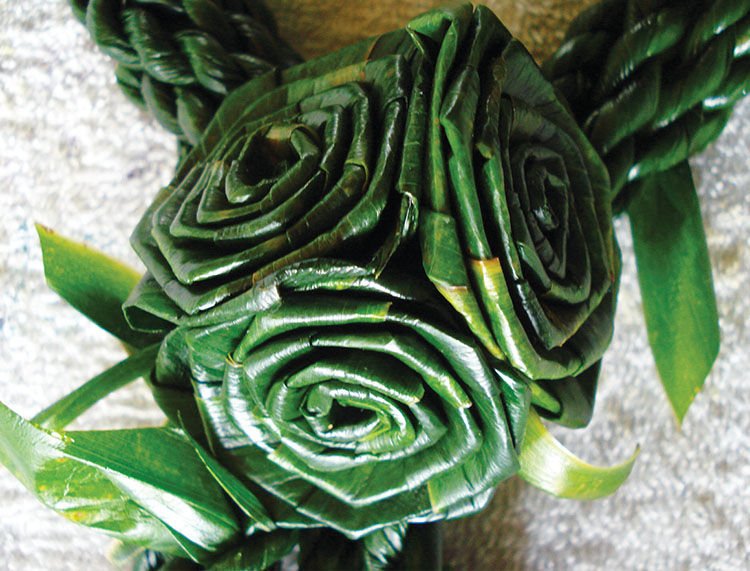
Signature of One’s Life: The Story of Ben Mahi Samson
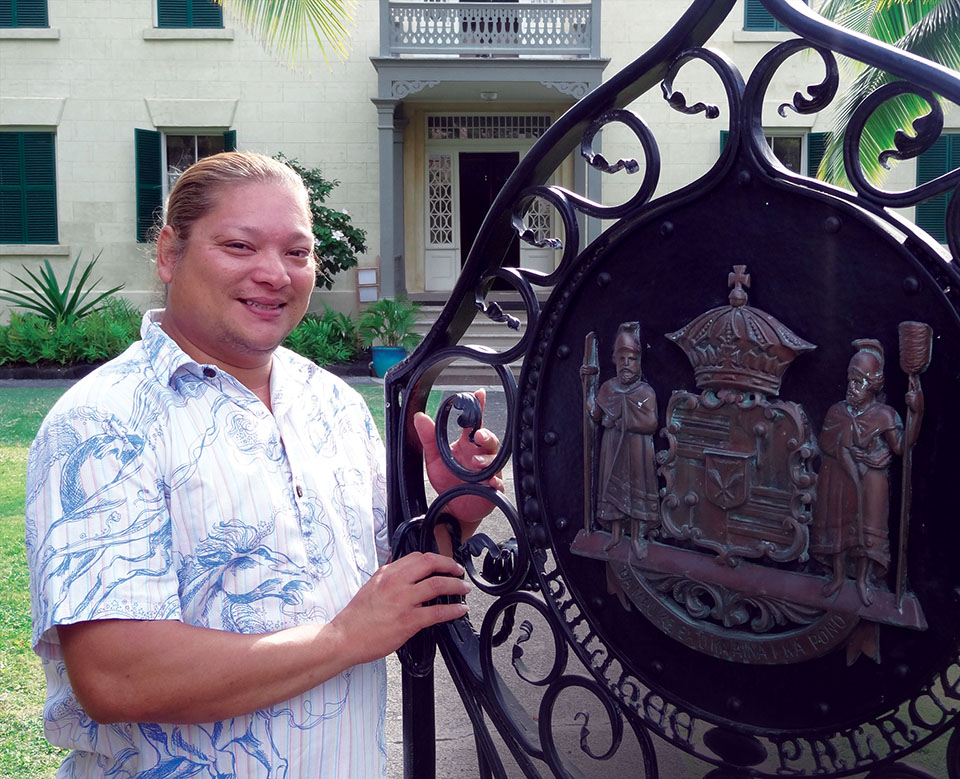 By Gayle ‘Kaleilehua’ Greco
By Gayle ‘Kaleilehua’ Greco
A signature is an imprint, a sign of one’s self that signifies who we are. A signature comes in many forms, as common as a signed name to as subtle as a familiar color. What happens, though, when one has multiple signatures that appear in such a way, that when they are connected, they weave the very fabric of their purpose? This is the story of Ben Mahi Samson.
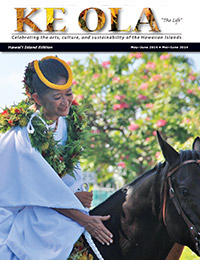
If you’ve been in Kailua-Kona for any length of time, you’ve seen Ben’s signatures. Watching a parade or being at a celebration, you catch a glimpse of three ti leaf roses formed as a cluster on a lei, and with a simple nod to one another, you know that Ben Samson created that lei. Ben created the rose clusters years ago when he was at the Merrie Monarch Hula Festival craft shows.
“I went around to all the auntys to see how they made their ti leaf flowers and I started practicing. The flowers would come out all different ways,” Ben says, laughing and shaking his head as his mind wanders back to the craft booths outside the Hilo Civic Center Auditorium. “Then, I would just practice, practice, practice. And in time, I started putting the three roses on all of my ti leaf lei.”
The nimble fingers of this lei master began picking flowers and making lei in the early years of his childhood. Ben would walk the trails on the family’s farm and call out to his grandmother, “What’s that?”
She, in turn, would test young Ben on the names of the flowers, and together they strung their lei in mutual love of the plants and each other. These were quiet moments in the garden, unlike the times when Ben and his sisters would tromp through with their grandmother yelling repeatedly, “Don’t touch the plants! Don’t touch the plants!” Ben laughs a sincere, endearing laugh, looking to heaven and silently thanking his tūtū (grandmother) for those memories.
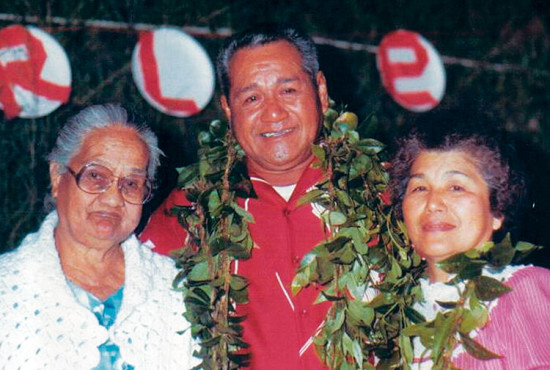
Ben credits his grandmother, Phyllis Kiyoko Uwaine Mahi, a five-foot woman originally from Okinawa, Japan for his affinity for flower arranging and lei making. The two were so close that while Ben was in tenth grade at Hilo High School, he took a year off to care for his grandmother who was diagnosed with cancer. His grandfather was working long hours on the farm, his mother was working three jobs, and Ben knew what he wanted to do. He chose to stay at home and be the caregiver for his grandmother, giving them both time to continue weaving stories and memories, just as they did back on the flower farm. Ben cared for his tūtū until she passed.
The flower farm was turned over to Ben’s uncle and Ben went back to school. Ben’s eyes still smile at the precious time he had with his grandmother.
He recalls, “We liked so many of the same things; she taught me so much.”
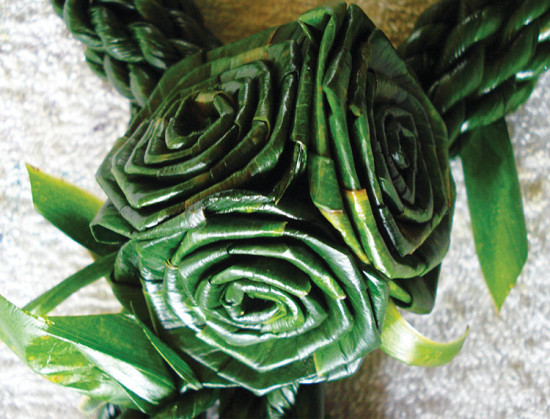
It was then that Ben started creating his masterpiece lei, and he recalls that at his grandmother’s funeral, he made a 100 strand ti leaf lei in her honor. That moment was the beginning of one of Ben’s signatures in life.
While much of Ben’s childhood was on the land, his father taught Ben everything he knew about the sea, from fishing to diving to netting. Ben’s father, Benjamin Samson Jr., was a fisherman who knew the art of the sea better than anyone. He taught his children the importance of bringing food home and how to keep the balance with the sea life. Another layer to Ben appears as he begins to riddle the names of many fish that they would catch, and one realizes that there is a virtual symphony of respect for nature that has been imprinted on this island boy. Ben’s father passed away while fishing on the south shore of Hawai‘i Island when Ben was eight years old.
At that time, Ben’s grandfather, Charles Mahi, became an important role model for Ben. His grandfather was the Hope Kahu at the Ke Ola Mau Loa Church in Waimea and also worked the family farm.
Ben credits his mother, Beverly Mahi Samson for his genuine nature, work ethic, and education.
Ben reflects, “Our mother sacrificed a lot so that her seven children would have a full and happy life.”
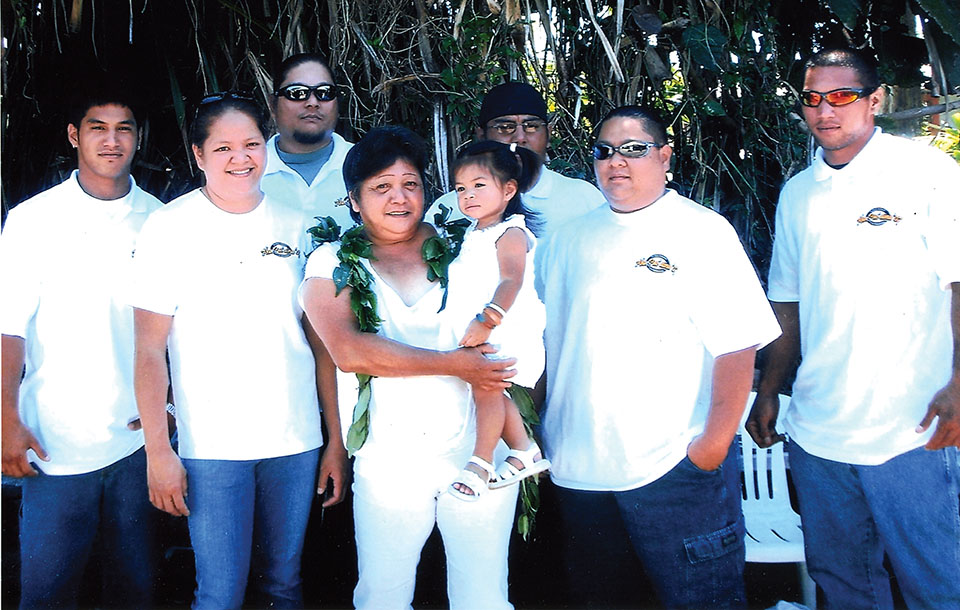

Although Ben says they lived a simple life on the farm, they never wanted for anything, had plenty of food, and had each other to play with.
In 1993, Ben moved from Hilo to Kaua‘i to live with his Aunty, Cindy Mahi Rivera, and her ‘ohana from Kaua‘i and Ni‘ihau. Once again, Ben was a sponge as he learned the art of picking Ni‘ihau shells.
Ben remembers, “I was lying on the beach, calling out, ‘Which ones, Aunty?’ And she would call back, ‘The pink ones!’.”
Ben’s hands rise in the wake of a smile and laugh as he says, “Of course, the pink ones were the smallest ones.” Ben squints and pinches his fingers together, “Such small, detailed work, these shells not for me!”
While working in Kapa‘a, Kaua‘i, Ben entered many lei making contests and continually won the top prizes for his creativity. After winning first place multiple times at the Kaua‘i Museum lei competitions, Ben was asked to be a judge. He was so humbled at such a young age to be a judge of something that he cherished so much. Ben remained a judge of this competition for three years, evaluating this craft and also still learning and refining his own art of lei making. When asked what he looks for in a lei as a judge, Ben reflects, “I look for creativity, style, the technical skill, the mindset of colors, the flowers, the textures.” And then he pauses to say, “I want to know the story of each lei. That is what is most important. What is the story?”
Return to Hawai‘i Island

In 2000, Ben received a job offer to be the manager at the ABC Store on Ali‘i Drive in Kailua-Kona. As destiny would have it, the store was next door to the Hulihe‘e Palace, which would bring Ben home to his roots, the lineage of the maternal side of his family, the Mahi ‘ohana.
At the time, Uncle Kahea Beckley was the caretaker of the Hulihe‘e Palace and became a mentor to Ben, seeing him every day after work. For the next six years, Ben listened intently to the many stories and historical references that Uncle Kahea shared with him, many of the stories about the Ali‘i (royalty) and the palace.
Ben comments that his mentors of this time were Uncle Kahea for the protocol of the palace, Uncle Treva Johnson for the history of the island’s west side, and Uncle Etua Lopes for lei making and the ancient history. Ben was so fascinated by their conversations and teachings, as he recounts story after story of their sharing, you can see that he drank up their words like flowers absorbing water in a vase.
Then, one day in 2002, along came Aunty Fannie Au Hoy, the (now retired) administrator of the Hulihe‘e Palace and asked, “Who is this boy?”

That solidified the bond of another teacher and friend, and as Ben says, “I received the mana‘o (thought, belief) of these Uncles and Aunty to know what I know today.”
Part of Ben’s current kuleana (responsibility) is being the caretaker of the Hulihe‘e Palace. Ben’s humble nature shows as he recounts a time after the 2006 earthquake when he was sitting in the kitchen of the Kuakini Building on the palace grounds with Aunty Nona Wong. Aunty Nona taught Ben how to rewire and repair the palace’s six Austrian crystal chandeliers. Ben reminisces how they would sit in laughter, talk story, or sit in silence as they painstakingly rewired each chandelier piece-by-piece.
He says, “Nothing was wasted, and today, if a prism is broken or a wire is frayed, I know how to fix it.”
When you visit the Hulihe‘e Palace, part of what you see is Ben’s signature revealing itself as dedicated benevolence, offering his eye to the finest detail of preservation.
In 2008, Ben started making ti leaf lei for the Ironman World Championship Triathlon. This project turned into something more than making lei for the winners of the race; in reality Ben custom-made more than 2000 lei for the event including a combination of ti leaf, haku, and floral lei. The finish line was completed with spectacular floral creations. Ben continues to supply the Ironman Triathlon event with flowers every year.
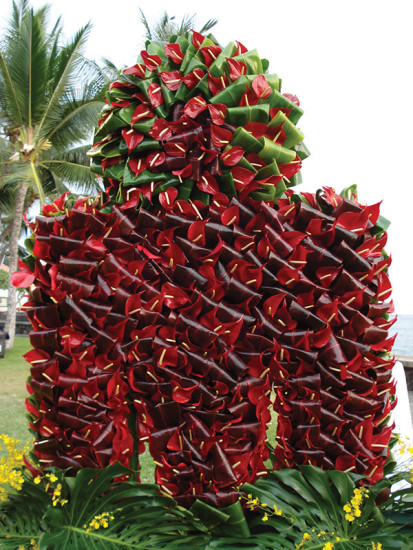
As time rolls along, so does the word of Ben’s award-winning floral creations. In 2010, Ben was asked to adorn the pā‘ū horse units for the Aloha Parade in O‘ahu where Ben and his crew were awarded first place in every category. This was the first time in the parade’s history that there was a clean sweep of the awards.
In 2012, the mainland called and Ben was asked to decorate the pā‘ū horse unit for the Portland Rose Festival Parade in Portland, Oregon. Ben shipped the flowers, the prepared lei, and adornments to the site. Another successful award-winning creation, Ben won the Best Floral Unit of the parade. It was the first time that the Hawaiian Islands had won an award at this Oregonian parade.
Ben’s generosity casts a large net over many and presents another signature of what he is known for.
His love for sharing his gift is heartfelt as he says, “I find that lei-making is so gratifying; I feel so proud to create out of love. I only string lei if I’m in a good spirit. When I’m not, I leave the lei and string it another time.”
When asked what his grandmother would say of his achievements, Ben reflects, “She’d be so proud, so happy, and say, ‘Oh, my goodness, boy!’”
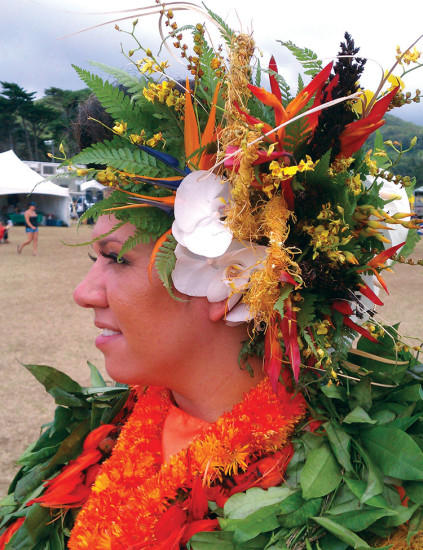
Ben’s love of making lei starts with his time on the ‘āina (land) as he searches for and picks nature’s offerings.
“I love the forest, the native, and local tropical plants. I only use what is from the islands. That is what I feel is special—when I can pick and use what the island provides,” says Ben. Once again, Ben credits his grandmother, Uncle Etua, and Uncle Treva for teaching him about the plants, where to find them, and how to care for them.
As Ben reflects on his 40 years of life, he recognizes first his faith in God for giving him the talent, knowledge, and wisdom, and for the opportunities in his life to learn and to teach. His never-ending smile, happy eyes, infectious laughter, generosity, creativity, and constant gratitude to his ‘ohana exude the essence of life, and Ben reveals, “This all brings me joy.”
Yes, joy. This is the signature of Ben Mahi Samson. ❖
Contact Ben Mahi Samson: CreationsByMahi.com, facebook.com/pages/Creations-by-Mahi/408198049288935
Photos courtesy of Ben Mahi Samson
Contact writer Gayle ‘Kaleilehua’ Greco: gayle.greco@gmail.com
